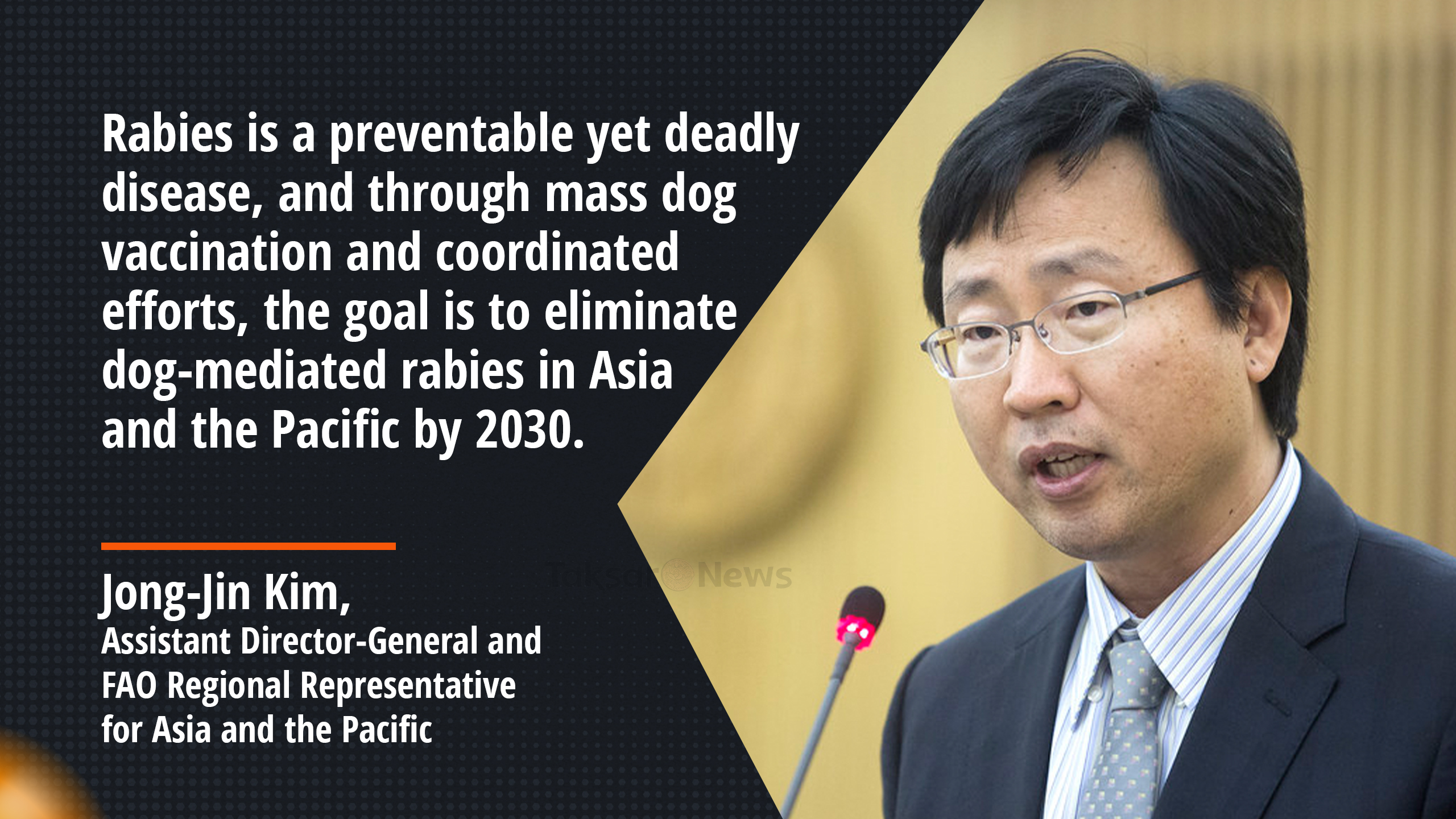By Jong-Jin Kim, Assistant Director-General and FAO Regional Representative for Asia and the Pacific
Discussion around the topic of rabies is almost exclusively related to the dangers it poses to humans from dog bites. And it’s no wonder, because if a rabid bite is left untreated it is almost always fatal. Indeed, human deaths from rabies – almost always caused by dog bites – account for an estimated 59,000 fatalities each year.
In most countries of South Asia and Southeast Asia, rabies is endemic. In fact, 95 percent of the world’s deaths from rabies occur in Asia and Africa.
But rabies poses another menace that is less well known. In addition to humans, rabid animals can infect livestock, with estimated losses of more than $500 million each year. Hence rabies is also a threat to our food security.
In addition to livestock losses, when rabies is present, farming families may be afraid to leave their home to tend to their animals, or to go to the market. Rural poor and marginalized communities are worst affected during an outbreak due to lack of access to health care. Treatment can also be costly.
But rabies is preventable by initiatives to vaccinate dogs and manage the population of stray dogs. The Food and Agriculture Organization of the United Nations (FAO), working with our Member Nations and other partners, has been actively involved in programmes to vaccinate stray dogs in several countries.
Since 2019, FAO has supported Bangladesh, Bhutan, Nepal and Sri Lanka through a Regional Technical Cooperation project to strengthen the countries’ capacities to control rabies and through the establishment of an Asia-Pacific Rabies Action Centre of Excellence (RACE). Today, Bangladesh has a national mass dog vaccination programme entirely funded by government resources and recognized by RACE.
Another example is Indonesia, where the Ministry of Health estimates 100 000 dog bites annually, resulting in 150 – 300 deaths each year. In Bali, which had been free of rabies until 2008, just one imported infection resulted in the casualty rate of both animals and humans soaring in just a short space of time.
This was largely because of the high number of stray dogs in Bali – half a million. Following a request from the Government of Indonesia, FAO worked with the authorities in Bali and, together, they developed an integrated bite case management system (IBCM) where public health and animal health authorities coordinate and (jointly) follow up bite cases from suspected rabid animals.
This way, people can be advised on how to seek postexposure prophylaxis (PEP). Through mass dog rabies vaccination campaigns in Bali, the training of so-called “A-Teams” created highly skilled dog catching and vaccination squads that were able to increase vaccination coverage, especially of street dogs that can be difficult to capture and contain.
Likewise, in Viet Nam, a country that reports 70 to 100 human deaths from rabies each year, the Government has committed to achieve the 2030 goal of eliminating human deaths from dog-mediated rabies by renewing the National Programme on the Control and Elimination of Rabies 2022–2030.
FAO is supporting the Government of Viet Nam in developing essential policies and mechanisms to reduce human deaths from dog-mediated rabies with awareness-raising campaigns, particularly at the local level, to prioritize and increase resources for the management of dog populations, the vaccination of dogs, and provision of post exposure prophylaxis for those bitten by dogs.
Controlling the disease in dogs through good quality vaccines and dog population management remains the most cost-effective way to sustainably protect humans from rabies exposure. But as with most complex issues, it is best to tackle rabies through collaboration nationally and through cross-border and regional approaches: enhancing disease surveillance and laboratory diagnostics, defining and implementing clear protocols and interventions after animal exposures, mass dog vaccination campaigns, dog population management as well as overall public awareness for the involvement of municipalities and communities in rabies prevention and control.
Since the establishment of World Rabies Day (WRD) in 2007, FAO has actively contributed to the commemoration of this day at its headquarters and at regional, as well as national and local levels. Working with our partners in the World Health Organization and the World Organisation for Animal Health, we are collectively committed to pursuing “Zero by 30: the elimination of dog-mediated rabies by 2030.”


